Bangarra’s SandSong tells the story of the Kimberley
Ningali Lawford-Wolf planned to collaborate on a work that told the story of her birthplace — our flagship indigenous dance company’s latest show. Tragically, she wouldn’t live to see it.
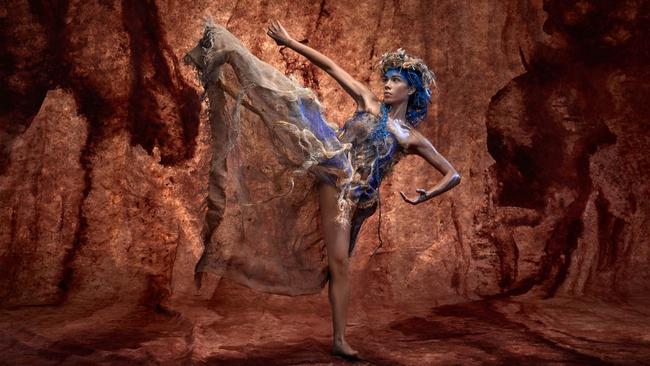
Warning: Aboriginal and Torres Strait Islander readers are advised the following article contains the name and image of someone who has passed. The photo has been approved for use by Ms Lawford-Wolf’s family.
-
When Ningali Lawford-Wolf was a little girl growing up in Western Australia’s Wangkajunga country she was always dancing. “Dancing with the wind” is how her older sister Eva Nargoodah describes it. “We always had singing and dancing in a cultural way, but when Ningali was growing up she used to just dance and dance. We’d make a joke and say, ‘Next you’ll join a dance crew or something, dancing all the time like that’.” Lawford-Wolf did just that, joining the national Indigenous dance theatre company Bangarra, before going on to have a diverse and acclaimed career as a stage and screen actor in Australia and the world. What many of us didn’t know was that Lawford-Wolf was much more than an actress and dancer. She was also a mentor to young girls in schools in WA’s Broome and Fitzroy, a cultural leader who shared the stories and history of her people with younger generations. But she always had a dream of one day returning to Bangarra to collaborate on a new work telling the story of the country she is descended from and on which she grew up, the Kimberley and the Great Sandy Desert regions.
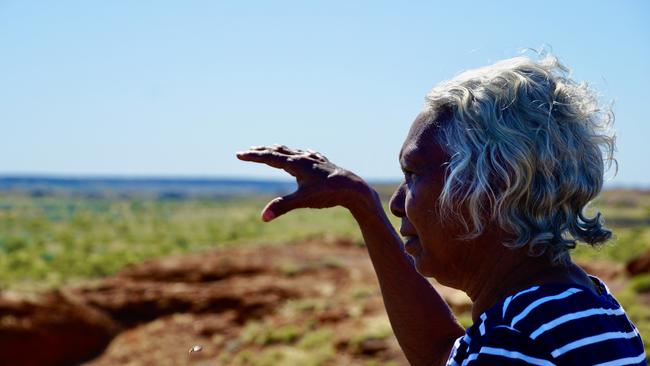
Lawford-Wolf’s story has now come full circle, as Bangarra prepares to debut that very production, SandSong, at the Sydney Opera House. But Lawford-Wolf will not be there to see it. The beloved actor, cultural consultant, former Screenwest director, mother and grandmother died in August 2019 in Edinburgh aged 52 following complications from an asthma attack. At the time Lawford-Wolf was touring Britain with the Sydney Theatre Company’s production of Kate Grenville’s award-winning frontier novel The Secret River, which she had helped develop and in which she played the omnipresent narrator Dhirrumbin.
At the time, Victoria Laurie noted in this paper: “Lawford-Wolf’s untimely death is a profound loss to Australian stage, television and film, where her extraordinary versatility as a serious actress and comic performer was exploited in many roles.”
These included Rabbit-Proof Fence, where she performed alongside her mother Myarn in a film that tackled the deeply personal trauma of the Stolen Generations; the celebratory musical comedy Bran Nue Dae with Jessica Mauboy and the poignant road-trip love story Last Cab To Darwin opposite Michael Caton, earning her an AACTA Award nomination. On stage she performed with Belvoir (Aliwa) and Black Swan Theatre Company (Uncle Vanya), among others, along with her own one-woman show Ningali which she co-wrote with Angela Chaplin and Robyn Archer and toured nationally and internationally for two years.
But for all her stage and screen work it was through dance that she was first able to share her culture, training at the Aboriginal Islander Dance Theatre (now NAISDA) in inner-Sydney, then on to Bangarra. Based in Broome, Lawford-Wolf maintained close ties with the company, collaborating and performing with them in the 2002 production Walkabout, a double bill including Rations that related the story of her mother’s community being lured from their homeland, clothed in cast-offs and fed an alien diet of flour and sugar, resulting in a cycle of dependency.
After seeing the Bangarra anniversary show, 30 Years of Sixty Five Thousand, in 2019 Lawford-Wolf approached artistic director Stephen Page to say she was ready to collaborate on a story that not only celebrated her people’s close ties to the red pindan dust of their desert homeland but also broached the pain of being forced off that land. “It was all locked in.
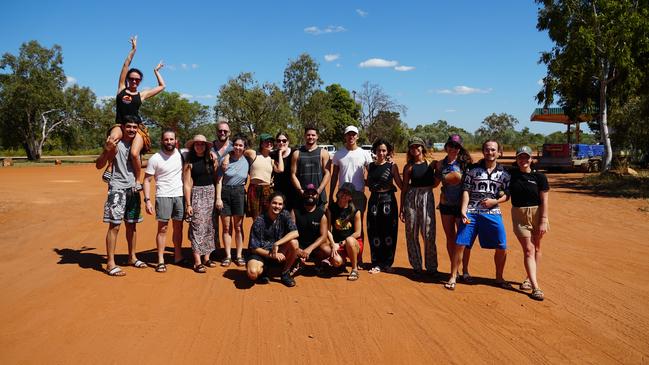
Ningali loved her country, the Kimberley, and was interested in choreographing sections which was so exciting,” says Bangarra’s associate artistic director and choreographer Frances Rings. “It was going to be the work we collaborated on the following year. But as we all know, devastatingly, that wasn’t to be.”
Ironically, Page and Rings were in the Kimberley, meeting with Wangkajunga/Walmajarri elders to formally gain permission and lay the groundwork for the cultural aspects of the show, when they received the shattering news.
They immediately flew to Edinburgh with Lawford-Wolf’s sister Nargoodah and brother Putuparri Tom Lawford.
“It was one of the worst times of my life,” Rings says. “But if anything good was to come out of it, it was renewing ties with her family. We told them Ningali was committed to doing a work with the company and they agreed to honour that commitment and step in in her place.”
Rings and Lawford-Wolf had been close friends since they were 17 and 19 respectively, having met while auditioning for NAISDA in Sydney in 1987. Before long they were flatting together and Lawford-Wolf invited Rings back home to WA, where her family embraced Rings like a daughter, grateful to this so-called city girl for looking after their country girl. Rings has always looked to Lawford-Wolf for inspiration.
“I’d never met someone like her before, someone who shifted between both places,” Rings says. “She was born under a tree at Christmas Creek Station, and at 16 she goes off to Alaska as an exchange student. She was incredibly worldly and yet so culturally grounded. I knew very little about my identity and she saw that in me and thought, ‘I’m going to look after you’. And I’m so grateful she did. I don’t think I’d be the person I am today without having that belief and friendship.”
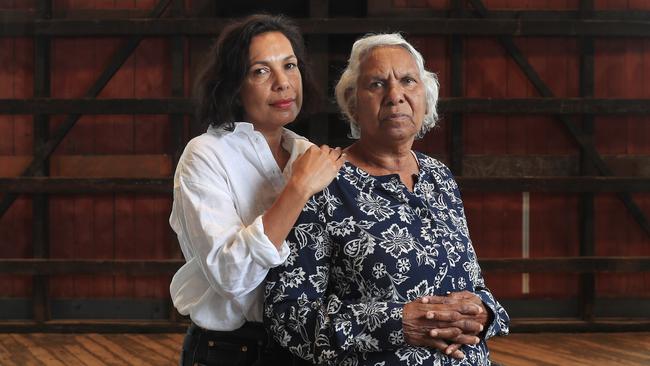
Rings and the Bangarra team have since returned to Lawford-Wolf’s country numerous times to meet family and cultural leaders, hear their stories and dance together in preparation for SandSong. Rings has become close friends with Nargoodah, herself an acclaimed artist, designer, bush medicine expert and healer whose work has been exhibited from WA’s Mangkaja art centre to Belgium and Singapore.
“It was really good to see Bangarra again, I started talking to them and teaching them a few of the dances we know,” says Nargoodah, who had seen Walkabout among other Bangarra shows.
“One of the beautiful moments of the trip was taking the dancers to where Ningali’s final resting place is, with her father and brother and other family members are, it was really moving,” says Rings.
“They shared so much and we felt (the production) would be beautiful and have all the resonances our sister would have wanted, guided respectfully by her family.”
Choreographed by Page and Rings, SandSong looks deeper into the work begun by Rations, the story of the Kimberley and Great Sandy Desert community in all its beauty and heartache. It unveils the resilience of those communities who, between the 1920s and ’60s, were removed from their land and forced into hard labour in return for minimal rations, the impact of the Canning Stock Route being established and the imposition of various protectionist acts. Despite the displacement and cultural disruption, the people of the Western Desert maintained a steadfast connection to their land, people and stories.
“When Ningali took me back to her country I saw that little bohemia tree she was born under, it was behind a fence and she said, ‘Fran, I can’t go to that tree. I’m not allowed on that land because it belongs to someone else’.”
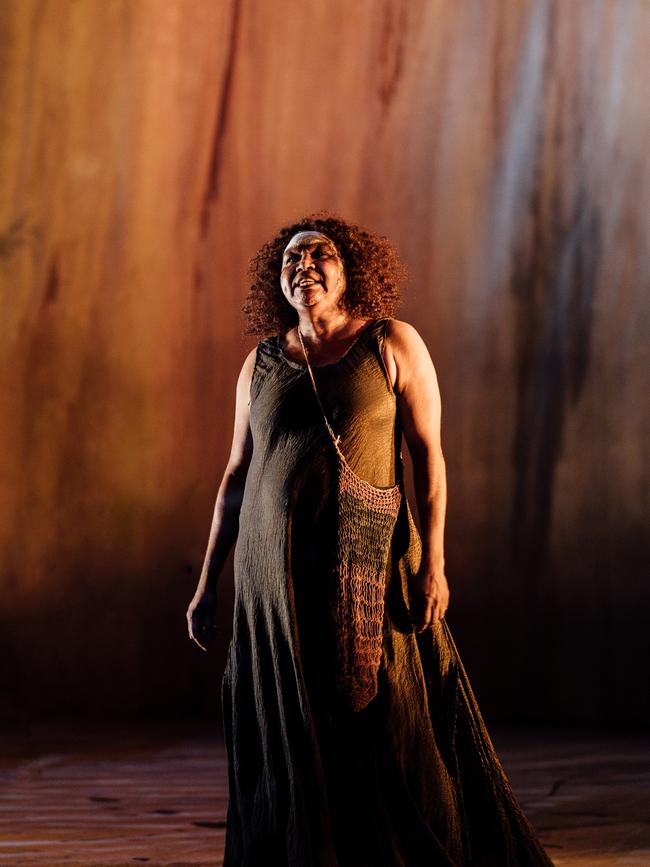
Rings recalls. “I’m so disappointed I didn’t ask her more later, but when we did catch up she was exhausted and we were just two friends having a gossip and a glass of wine. The last thing she wanted to do was talk about politics or history and the impact of government policies on family. Anyone who met Ningali would know there was a light that came from her, an energy that blew people away. But at the same time she carried a lot. She knew that her work as a cultural mediator helped improve people’s understanding of Indigenous Australia, and she gave that generously. But it’s hard telling these stories, that trauma is real, that blanket of grief is real and every time it’s told it’s reliving it. But it’s starting the journey to healing as well.”
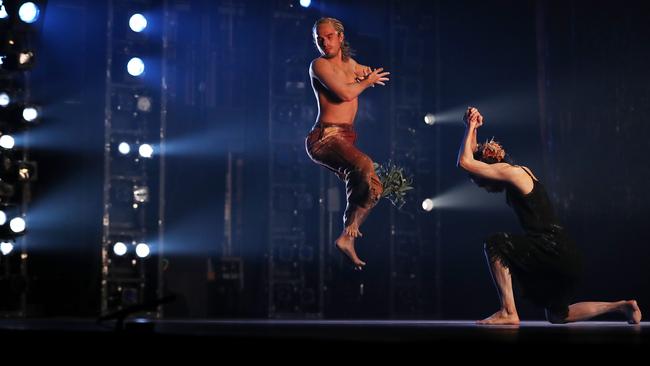
When Bangarra visited the Kimberley last month it shared with the community two SandSong dances: a men’s totem piece and women’s kinship piece. “They loved it, everybody loved it,” enthuses Nargoodah. “It blew my mind. This is her, all over. Ningali would be over the moon if she could see it, but she’d want to be in it, she’d just talk, talk, talk! She was always funny, always laughing.”
In a beautiful sense Lawford-Wolf is in the production. Composer Steve Francis recently unearthed some tracks she had put down with the late David Page, Stephen’s brother and the company’s former music director, and woven them into the SandSong soundtrack.
“Ningali and Dubboo (David) were really close, she would hang out in the studio but we didn’t know we had all these recordings,” says Rings. “It feels like she’s carrying us through. I like to think she’s guiding us as we journey through the experience of her people and her country.”
In addition to a national tour, SandSong will return to the Kimberley for a community show. “This is a work we want to give back to the family and community, as a thank you,” Rings says. “Ningali spent all her time doing things for everybody else. This is our way of saying thank you to her.”
SandSong opens at the Sydney Opera House on June 10 before touring nationally

